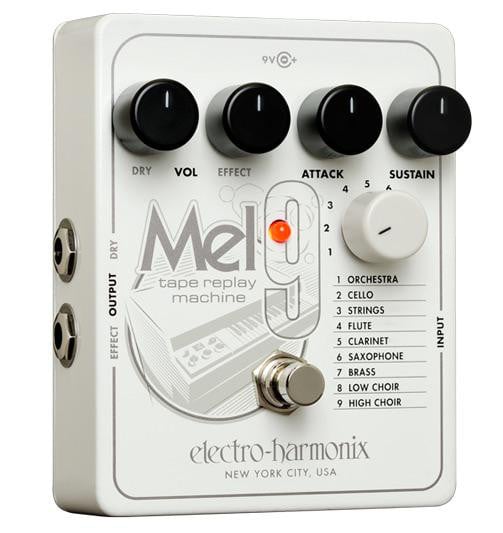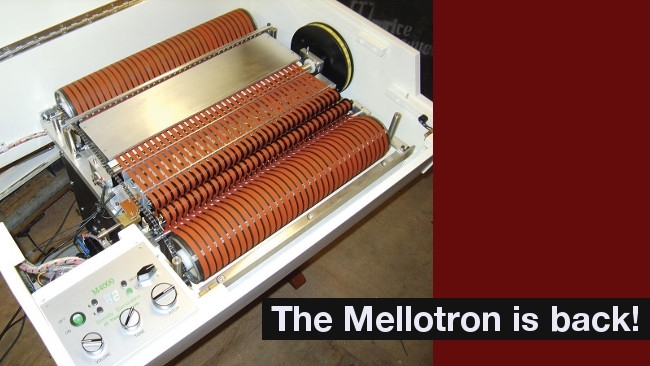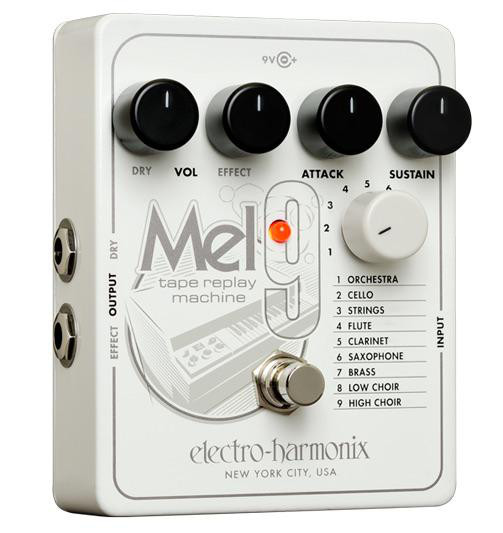
 The Mellotron is back!
The Mellotron is back!
RedShark Replay: A profile of a true blast from the past, the Mellotron, which has become yet another tool to tap into the nostalgia of a bygone era. By Roland Denning.
I recently wrote a piece about the Optigan, an early analogue 'sampler' made by Mattel that was a domestic version of the better-known Mellotron. The Mellotron of the 1960s, made famous by recordings like The Beatles' Strawberry Fields Forever, The Moody Blues' Nights In White Satin, many tracks by King Crimson, OMD, Genesis and Yes, and later rediscovered by Oasis, Radiohead and The Brian Jonestown Massacre. A British-built version (or some would say rip-off) of the American Chamberlin, the Mellotron consisted simply of lengths of tape (not loops as I incorrectly described them before) which contained recordings of real instruments, one tape for each key of the keyboard. Unlike the Optigan, which used continuous recordings from an optical disc (press a key and the note would go on forever), the Mellotron's notes would last no longer than 8 seconds, but as they had a start point, they could produce an element of 'attack' when you hit the key.
Here's a rather quaint British commercial for the Mellotron from 1965, featuring magician David Nixon:
Lo-fi strings and horns
In its heyday, the Mellotron was in high demand because it sounded like you had a whole string or horn section in your band (believing this might make human musicians redundant, the Musicians Union tried to ban it). Now, the Mellotron is desired because it sounds like a Mellotron. There's no mistaking it today for a real orchestra, but the quirky, low-fi sound is part of its appeal.
What's fascinating about the Mellotron is that it just won't go away. It is still being made today by Streetly Electronics, the original manufacturers. Although Streetly has 'improved' the mechanism in many ways (perhaps a controversial notion, given that the Mellotron has become loved for its weaknesses, as much as its strengths), they are still expensive, heavy and complicated machines notorious for being temperamental when taken on the road (Rick Wakeman allegedly set fire to two in frustration).
Modern Mellotron?
 Mel9 Tape Reply Machine
Mel9 Tape Reply Machine
Unsurprisingly, many who love the Mellotron sound would rather use the readily available Mellotron emulators and plug-ins, like this one free from UVI.
A newly announced pedal from Electro-Harmonix makes this even easier. Just plug your guitar into the Mel9 Tape Reply Machine and, for well under £200, your guitar takes on the guise of a classic Mellotron. Here it is in action – it's rather impressive:
Explaining the resurgence
Which brings us to ask the question why? Why, when digital samplers and synthesisers can produce the sound of any acoustic instrument you want with very convincing results, why are so many still interested in a clumsy, erratic, obsolete machine that never sounded very authentic in the first place?
I can think of three reasons. Firstly, our experience of music is inextricably tied up with memories of past music and its associations, of which the sound of the Mellotron is richly evocative. There's still huge nostalgia for the classic rock era of the 1960s and the technology associated with it (need I mention the Vox AC30 or the Marshall Plexi?).
Secondly, there's a reaction against the cleanliness of modern digital instruments; just as filmmakers are adding grain to digital video and shooting with older, softer lenses, there's a desire for more characterful sounds and images with atmosphere and personality.
Thirdly, there's an argument that, in the creative process, rather than having a device that can create almost any sound or image, some artists prefer to work with a tool that has limitations. That struggle with a device which won't always do what it is told can be very productive. You can make your clean digital movie look like Super 8mm or make your midi keyboard sound like a Mellotron, but the experience will be very different (and probably much harder) than actually shooting with a Super 8 film camera and playing a real Mellotron. But even if you don't have access to the real thing, by emulating a past form, you've narrowed your options and added some random elements. And that often can be a very good thing.
If you want to find more out about the Mellotron, there's an excellent feature documentary devoted to it, Mellodrama: The Mellotron Movie, available on DVD.
Tags: Audio


Comments